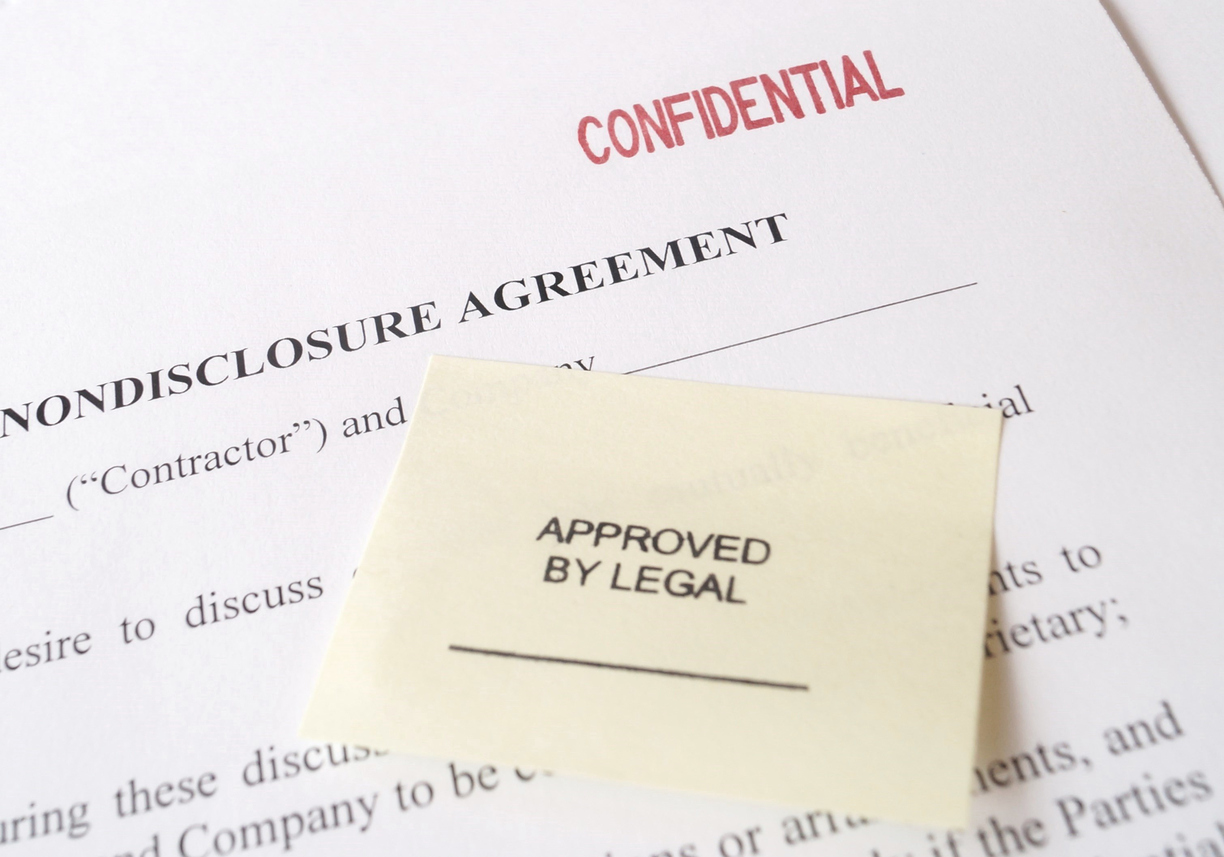Non-Disclosure Agreement
Learn more about Non-Disclosure Agreement
To maintain your business's competitive advantage, use a Non-Disclosure Agreement (NDA) to protect your proprietary information. Having an
NDA form helps protect your intellectual property, like your trade secrets, from getting into the wrong hands. Get it in writing before sharing any confidential information, so both parties understand their duties and privileges.
Types of Non-Disclosure Agreement:
Although the content of every NDA agreement is unique, there are two main types of standard non-disclosure agreements. They are referred to as a "unilateral NDA" and a "mutual NDA".
A unilateral non-disclosure agreement is a contract in which one party agrees not to disclose certain information of another. Most NDA contracts fall under this umbrella. For example, if you own a business and are hiring an employee or contractor, you may ask that they keep your trade secret under wraps. Upon signing, this employee or contractor is bound by law to do so.
A mutual non-disclosure agreement, on the other hand, is when both parties agree to not share the other's information. Commonly, mutual NDAs are signed when two businesses share protected communication.
What is the Purpose of a Non-Disclosure Agreement (NDA)?
- You're a business, and you want to ensure that the proprietary information you're sharing with another person or organization won't become public.
- You're a consultant who's been given access to proprietary information belonging to another person or organization, and you want to clarify the terms under which information is shared through a formal confidentiality agreement.
Other names for a Non-Disclosure Agreement:
NDA, Non Disclosure Form, Confidentiality Agreement, Confidentiality Statement, Confidential Disclosure Agreement, Proprietary Information Agreement, Confidentiality Clause.
Kinds of information covered in a Non-Disclosure Agreement:
Obviously, not all of a business's dealings are confidential. The business's address is one common example, though anything that's a matter of public record should not be covered in an NDA or Confidentiality Agreement form.
So what should be covered? Generally, businesses will include trade secrets—such as a secret formula, recipe, or manufacturing process. This can include anything from a specific invention used only at that business or even a treasured list of sales contacts. Commonly, it's what sets one company apart from another.
How Do You Write a Non-Disclosure Agreement (NDA) Contract?
Unlike many business contracts, Non-Disclosure Agreements can be pretty straight forward. There are generally two parties involved in a standard unilateral NDA: the discloser of the confidential information and the recipient. The
discloser can be a business or an individual who has information that they'd like to protect, and the
recipient is another business or person who has access to that information. If both parties have information that they'd like to protect, then a
Mutual NDA might be a better idea.
In addition to signatures, there are generally two main things you need to include to make a Non-Disclosure Agreement legally binding:
Disclosure of Confidential information
You'll need to lay out exactly what information is confidential or a trade secret. Remember, it's in your best interest to be specific here. General phrases like "business practices" can be hard to define and harder still to prove they've been breached. So feel free to note exactly what confidential information you don't want disclosed in the NDA. You may have to write a few paragraphs or pages, but a specific non-disclosure agreement goes a long way to protecting your information.
Timeframe: How Long Does Your Non-Disclosure Agreement Last?
The timeframe will include the date the NDA agreement goes into effect, as well as how long it will run. The date the agreement starts should be fairly self-explanatory (and often times is the date that the confidentiality agreement is signed), but you'll have a few different options for how long a Non-Disclosure Agreement will last.
Firstly, you can choose a specific time period, such as five years from the date signed. You can also choose a date that the Non-Disclosure Agreement will expire (such as when the project is completed). You can also bind someone to secrecy indefinitely, meaning that at no point can the signer(s) divulge the confidential information contained in the NDA agreement.
Non-Disclosure Agreement Exclusions
There are certain kinds of information that cannot be subject to an NDA. If the recipient of the NDA has prior knowledge of the information, for example, or if the recipient gained additional information from a different source. Also, any information that's common knowledge (or generally available to the public in some way) cannot be covered. Lastly, if the information in the Non-Disclosure Agreement can be subject to a subpoena, it may or may be coverable. If you have questions about what you can include in your Non-Disclosure Agreement form, make sure to consult an attorney.
Legal Review of Your Confidentiality Agreement (NDA Form)
It's a great idea to have your NDA agreement looked over by a seasoned business or
intellectual property attorney to make sure that you've crafted it well. They'll be able to give you feedback and tips about how to make your Non-Disclosure Agreement as airtight as it can be.
What Happens if an NDA is breached?
If an
NDA is breached, the party who revealed the confidential information could be sued for damages, be forced to pay back lost profits, and in some cases, be held in contempt of court (which could lead to criminal charges).
You may want to
ask a lawyer, if you feel that your agreement has been breached. Rocket Lawyer members have access to
Document Defense, which will connect you with an On Call attorney who will review your situation and respond on your behalf, if you find yourself in this situation.
If you have more questions about how to write a Non-Disclosure Agreement (NDA), you can get
legal advice right away from our Rocket Lawyer On Call
® network.
